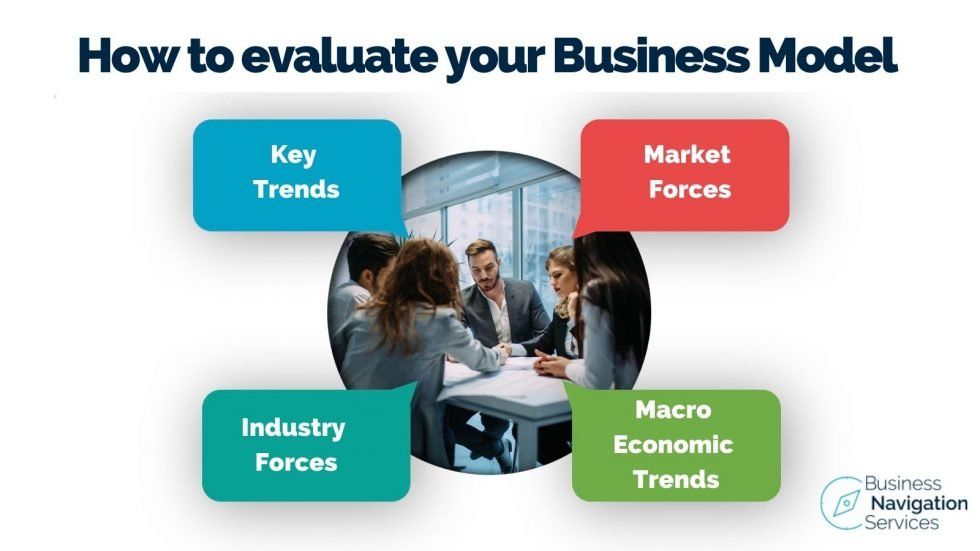Resource Hub

By Ian Squires
•
18 Feb, 2022
Some of the greatest innovations of our time are the result of someone being curious enough to keep asking questions and to go beyond their current knowledge or area of expertise to address a problem.
Do you encourage your team to seek new and fresh perspectives and ideas?
Are you a real model for your team and probe for further information and ask open questions?
Are you looking to learn and share new ideas or models or great articles or strategies?

By Ian Squires
•
18 Feb, 2022
Building a successful business is like climbing a ladder – every rung you climb takes you closer to the top. But that ladder can look like a very long one, stretching out up to the sky, and bringing you out above the clouds. Without planning your climb, it’s easy to understand why so few people make it to the top. Some barely ever make it off the bottom rung. Most hang on for dear life somewhere around the middle – either happy that their view is better than most, or desperate to move towards the top, but too scared to step up to the next rung in case they fall. For those who make it all the way to the top, however, the view is amazing. Read on to find out a bit more about the idea of the ladder of success, and how this translates for your own business. The bottom of the ladder Some people never get time to climb the ladder. If you’re spending all of your time firefighting and focussing on the here and now of your business, this is where you probably find yourself. If you haven’t planned your climb up the ladder, you’re never really going to take your business to the top. The top rung dream It’s all very well dreaming about the view from the top rung, imagining what you can see and how life will be once you get there, but dreams need a plan behind them if you’re actually going to see them come to fruition. Climbing the ladder If you’re actually going to make it all the way, you need to have that vision of the view from the top rung, because that’s what will motivate you. And you need to start at the bottom as the sort of person who can get stuff done, because that’s a necessary part of business. What makes the difference is planning how you’re going to make the climb. Planning your climb will allow you to step up every rung on that ladder The ability to plan WHO does WHAT and WHEN is critical to reaching the heights of true business success. So you need to start planning. You can’t just take one step and get to the top, you have to plan one rung at a time. This is what we do at Business Navigation Services . We work with business owners, helping them to create and execute the plans that will move them towards the top of that ladder – one rung at a time. Planning your climb Long term goals. What do you want to see when you get to the top of the ladder? This vision is important. Every action you take, and every plan you produce should be aiming to get you to this point. 5 and 3 year goals. Once you know what your end goal is, you need to work backwards to work out the key things you need to get you there. What key things will you need to achieve in 3 years and in 5 years to know that you’re on track to get to your long term goal on time? 1 year goals. Planning the next year is key. It’s a timeframe that has enough urgency to really make us think about what we have to do, but still gives us enough time to achieve big things. When we’re planning for the year ahead, it’s important to get commitment on every level. Why? What’s the PURPOSE of this goal? How does it contribute to making the vision real? What? What does the business have to DO to make the goal happen? Who? Who DO we, the business owner, team and business, have to BE or BECOME to achieve the goal 90 Day Action Plan. And once we know what we need to achieve during the year, we need to break it down into actionable plans. Identifying the key priorities to deliver within a 90 day timeframe increases the sense of focus and commitment. We can break things down so we can focus on what needs to happen each month , and translate that into weekly tasks and activities that need to be completed. It becomes clear what needs to be done, how much time it will take, and therefore who should do it. This process means that the firefighting can stop (or will be drastically reduced, at least!) More often than not, it means that tasks can be given to someone other than the business owner, so time can be spent on the next move forward rather than standing still whilst doing the doing. Once everything is under control, business owners can start taking planned and confident steps towards the top of the ladder of success. Help along the way If you’d like to apply these principles in your own business, and accelerate your climb up the ladder, I’m here to help. My purpose is to help as many Thames Valley based companies access coaching to create thriving and successful businesses. Accelerate things by booking a free 2 hour session with me. We’ll look at how you can start climbing those first few rungs, and what you might need to do to stay on that ladder right to the top.

By Ian Squires
•
12 Nov, 2021
Groundhog Day? Are you working harder each year with diminishing returns? In many instances that’s because the world is changing but your business has not adapted and changed. A key question for you to ask yourself is; What will my industry look like in 5 to 10 years? Adapting To Change Using Four Forces Model We use some fantastic tools in our business innovation and strategy practice and one of the best tools is called the Four Forces model, developed by Strategyzer. The Four Forces model looks at the business environment which impacts on your business and addresses four key areas: Here are some examples of the type of questions the Four Forces model can help you address. 1. Key trends How has technology impacted your industry? Which technologies represent important opportunities, and which have the potential to disrupt your market and margins? 2. Market Forces How has your customers buying behaviour changed and what do YOU need to change to take advantage of this? Have the changes impacted on your target markets and is the opportunity for you to go direct to market or should your sales channels change? Have your clients’ needs changed due to the pandemic and has you marketing messaging changed? 3. Industry Forces Who are the new entrants to your market and what can you learn from them? Have supply chain issues resulted in you needing to change your supply chain? Have you competition been impacted and are some of them now more vulnerable? Who has failed to adapt and change in your marketplace? 4. Macro-economic Forces How will changes in availability and cost of finance and resources impact you? How costly is it to get money? Is the education system producing the talent the business needs or do we have to build our own. If Blockbuster video had used the Four Forces model, then they would have been more likely to have seen the future and bought Netflix when they approached them rather than gone bankrupt five years later! Interested in your thoughts? What have been the biggest changes affecting your business? How To Build The Business You Desire Business Navigation Services are delighted to announce that we have designed a new Business Growth Programme specifically created for business owners who want to continue to grow and adapt to the continuing changes in the business environment . We work with our you and your teams, so you leave the programme with a clear business plan to enable you to build the business you desire. Learn more . To find out more, book a free discovery session to discuss your current business challenges and how we can help to overcome them.

By Ian Squires
•
05 Aug, 2021
During the early years the main issues relate to consolidating the business by improving controls, developing lead generation and building teams. As the business faces the challenges of expansion this tends to focus on securing funding, moving into new markets and new products and services, competing with bigger businesses, mergers and acquisitions and protecting the company’s position as markets change. We will take you through the 5 stages of business growth and help you to understand the challenges you will face and how to overcome them. The main growth hurdles a business faces as it aims to achieve its potential are as follows: Stage 1 Creativity The business gets off to a great start due to the strength of the new business model and concept and benefits from the founders drive and energy. The classic issue is that the business owner becomes overloaded with administration and operational problems. Stage 2 Leadership & Team Building At this stage leadership skill is required for the business to pull though this stage. We will help you identify your priorities, and work with you to give your business clear goals and a sense of purpose to drive the business forward. Stage 3 Delegation The solution to the crisis of autonomy is to recognise that more responsibility needs to be delegated to your team. Most business owners hand on to too many tasks and this is mainly because they believe that no one else can do the job as well as themselves. This is the main cause of businesses to stagnate and never reach their maturity. We can identify strategies that will help you overcome this challenge. Stage 4 Business Co-ordination During this phase the business faces a crisis of control. The business becomes more fragmented and uncoordinated. The results become apparent through a loss of profits, margin erosion, unplanned development and a lack of a coherent strategy. We aim to overcome this challenge by incorporating the best of delegation and the direction phases. Quite often this results in the business being subdivided into manageable units with their own goals and missions. Stage 5 Business Collaboration. The final remaining challenge is to make sure the business does not become a bureaucracy and that it loses the energy and drive that made it successful in the first place. We will help you to identify strategies that will create strong systems and an emphasis on team orientated activity. One of the areas we will focus on is management development and personal skills enhancement. How To Build The Business You Desire Business Navigation Services are delighted to announce that we have designed a new Business Growth Programme specifically created for business owners who want to continue to grow and adapt to the continuing changes in the business environment . We work with our delegates, so they leave the programme with a clear business plan to enable them to build the business they desire. Learn more

By Ian Squires
•
23 Jul, 2021
Business Navigation Services are delighted to announce the launch of our Business Growth Programme specifically created for business owners who want to continue to grow and adapt to the continuing changes in the business environment . We work with our delegates, so they leave the programme with a clear business plan to enable them to build the business they desire. We can tailor the delivery of the Business Growth Programme in a variety of different ways to suit each client: One to One With your Team Peer group training The Business Growth Programme objectives Paul Greenwood stated ‘’The Business Growth Programme is based on the teams 70 years combined experience of starting ,developing and growing businesses. We wanted to create a programme that could be used by business owners to create a clear roadmap for the future and be flexible enough to adapt to the continual change in the business environment. Business owners can apply all the learning directly to their business and this will maximise their chance of maintaining business growth and success year after year.’’ I have used the same approach to build award winning digital platforms such as PayPerKay as well as repositioning and leading Massar from a loss-making business to generating a significant profit and becoming one of the leading transport and logistics solutions providers in the Middle East region.’’ Paul Greenwood , Managing Director – Business Navigation Services The Business Growth Programme Content At the core of the programme is our seven-step Business Navigator process which combines business strategy, innovation, refining your business model and value proposition, financial modelling and creating the right performance indicators that will ensure you track the key activities that will produce the results you desire. We have also incorporated the best innovation techniques and tools that enable business owners and their teams to create a continual flow of new business by adapting existing products and services and creating new products and services people want to buy.

By Ian Squires
•
02 Feb, 2021
Getting team commitment when managing change Change is something that is not top of the list of enjoyable tasks for many people and there are many reasons that people give for putting off change. Current reasons I have heard have been “the team are working remotely and how am I supposed to forecast the future?” As a leader we recommend the following factors to give impetus and gain the teams commitment to making the necessary changes. 1. Explain the benefits Clearly explain the reason why managing change is important and the benefits it will bring to your teams. 2. Clarity Set clear goals , allocate responsibility and a timetable/plan for the programme or projects. 3. Project support The top tier must commit time and effort. No caving in to other pressures as determination is key to see managed change through and to support your teams. 4. Test ideas, products and services Pilot all change projects and test all new products and ideas before going live. 5. Empower your teams Empowering your teams will increase commitment. Aim to maximise the use of technology and ensure there is rapid decision-making and learning during the whole process. 6. Support your team Focus on increasing communication during this period of managing change. Give priority to supporting individuals and teams. Be open and prepared to become a sounding board who can offer practical support and useful resources. How we can help Business Navigation Services specialise in facilitating and supporting you with workshops, keynotes and project management. Book a FREE 30 minute consultation call with us to help you identify the next steps for your business. Useful Resource We would like to invite you to join a (Private – invite only) Group. You will get free access to the group with regular posts and content that can be shared by members and you can receive feedback on your own posts and ideas, in a safe and nurturing environment. Great market research! Share idea with like-minded people Facilitate access to innovation tools and technique tips Share stories and expertise in a welcoming environment Click this link to join: https://www.linkedin.com/groups/12465980/ We also have a Facebook Group as we found innovators were evenly split between LinkedIn and Facebook, partly driven by how they market to their client base. You would be very welcome to join that Group also: https://www.facebook.com/groups/322860915771948/

By Ian Squires
•
22 Jan, 2021
This period is presenting unprecedented pressure on business leaders whether it is coping with their business being told to cease trading short-term, significant falls in sales or significant growth. We believe there are some key actions for business leaders to consider. 1. Create a clear transition journey for your company This is a key period to communicate with your team as everyone is being impacted by the effect of the pandemic. We would recommend the following actions: Share your vision with all company meetings online. Share the challenges and the opportunities and endeavour to show the route map as best as you see at this current time. You will find people will rally around the business when they know the role they can play. Regular updates by video keep the team up to date Support the team through investing in learning to help the team through the change with many good online programmes available as well as management coaching and training. 2. Business leaders – Walk the virtual floor Many businesses are currently closed or online only, so it is harder to gain feedback directly from the team and clients. We would recommend you consider the following actions: Make your briefings two-way and ask for questions and search them out Make time for informal conversations and check-in. Conduct team surveys online 3. Track progress It is vital to continue best practice and still devote the necessary time to complete reviews with teams and individuals Share results and progress Use trusted colleagues and mentors to give you feedback and support through these times. 4. Celebrate success and fun Look for members of the team or teams that are performing well and for positive business results or early-stage outputs from new projects to encourage and nurture success. How we can help business leaders Business Navigation Services specialise in facilitating and supporting you with workshops, keynotes and project management. Book a FREE 30 minute consultation call with us to help you identify the next steps for your business. Useful Resource We would like to invite you to join a (Private – invite only) Group. You will get free access to the group with regular posts and content that can be shared by members and you can receive feedback on your own posts and ideas, in a safe and nurturing environment. Great market research! Share idea with like-minded people Facilitate access to innovation tools and technique tips Share stories and expertise in a welcoming environment Click this link to join: https://www.linkedin.com/groups/12465980/ We also have a Facebook Group as we found innovators were evenly split between LinkedIn and Facebook, partly driven by how they market to their client base. You would be very welcome to join that Group also: https://www.facebook.com/groups/322860915771948/

By Ian Squires
•
22 Jan, 2021
Some businesses can move at pace and have produced great results while some others have struggled to adapt. I have seen many small businesses change strategy and markets within days with positive results . So how do you improve your business performance in these unprecedented and unusual times? Make a start Here are 5 questions to ask yourself if you are struggling to improve your business performance during Covid-19: Is your business agile? Rate yourself on whether your organisation can be nimble, flexible and fast Has your business delegated decision-making and empowerment? Old school command and control is inhibiting change and team engagement. Why work on new ideas or show enthusiasm if you are just going to hit a brick wall. Does your business operate in silo’s ? In the current position business need to create high performing teams based on organising themselves around customer sectors, channels or markets. Silos inhibit change and cross functional teams have a clearer purpose and skills. Is your team all heading in the same direction? Have you set a clear vision for the future and explained the purpose of the change and the benefits it will bring the business, clients and the team. Have you got core processes in place in the business to improve performance? The best businesses have cross functional teams working together for their clients. They can empower them as the retain strong processes that keep the team together such as common business planning and business reporting and review processes. In addition, they have a focus on their team through employee recruitment, talent development and employee engagement plans. How we can help Business Navigation Services specialise in facilitating and supporting you with workshops, keynotes and project management. Book a FREE 30 minute consultation call with us to help you identify the next steps for your business. Useful Resource We would like to invite you to join a (Private – invite only) Group. You will get free access to the group with regular posts and content that can be shared by members and you can receive feedback on your own posts and ideas, in a safe and nurturing environment. Great market research! Share idea with like-minded people Facilitate access to innovation tools and technique tips Share stories and expertise in a welcoming environment Click this link to join: https://www.linkedin.com/groups/12465980/ We also have a Facebook Group as we found innovators were evenly split between LinkedIn and Facebook, partly driven by how they market to their client base. You would be very welcome to join that Group also: https://www.facebook.com/groups/322860915771948/

By Ian Squires
•
14 Sep, 2020
We have had many interesting conversations with numerous business leaders, with very differing opinions. Our belief is that successful companies practice innovation as an ongoing, repeatable business practice. You have to consciously and repeatably be evaluating your processes, products, and business model. Others believe that innovation is a chance occurrence or the domain of lucky creative people. We certainly do not believe that! Why do some firms grow and prosper while others deteriorate and decline? For instance, look at Apple; what makes them special? Design and software engineering skills can be found at thousands of technology companies around the world. At Apple however, those same skills are deployed in such a way as to generate products that change how people use technology products, (Apple has transformed the music, telephone, and computer industries!) One of the keys to success in business is to have a deliberate innovation process that is a continuous and repeatable business practice. Here are our thoughts on introducing innovation practices into your business: Establish a culture of innovation mindset Creating the mindset and the right environment for innovation to flourish begins at the top of the organisation. Innovation and creativity have no geography and it is the leader’s job to get it right and delegate it widely at every level throughout the organisation (do not restrict to a small band of specialists). We would further encourage the following: Listen and stay open – ideas do not always come from experts and sometimes come from internal and external novices and backroom thinkers. Collaborate – collaborate with outside groups such as customer forums, universities, government agencies, and other think tanks as this will bring new perspectives and ideas to the innovation process. Dedicate time to innovation. Empower employees and allow them to show initiative. Embrace failure – innovative thinking does involve risk taking (prudent and calculated risk taking, but nevertheless risk taking). There will be failures, learn from them ! Develop an innovation system You will need to recognise early on that you need two management systems. Let me explain why? One system to run the existing business Your current system is dedicated to the management of current products, current customers, and current markets. Your management and reporting systems are likely to be focused on negative deviations and underperformance. If this is the case, management will generally be presented with problems, and see their role as resolvers of problems. If so, the chances are that the organisation, will never be very innovative. Second system to run the future business The second system should be dedicated to the development of concepts for future products, future customers, and future markets. Management must be focused on opportunity creation, selection, and pursuit and must be supported by formal structures and systems. Innovative thinking needs to breed proactive behaviour. Management meetings, therefore, should have separate agendas that focus on opportunities as well as problems. Measure innovation The most important thing is to keep the measures simple and focused on what is important to measure. Set up targets and dashboards and incorporate into a balanced innovation scorecard. The list below could be a good starting point for your innovation journey and metrics. Financial Percentage of sales from “new” products Percentage of sales from “new” channels Percentage of sales from “new” markets Innovation magnitude (financial contribution divided by successful ideas) Investment efficiency (ideas explored divided by total capital and operational investment) Customer Number of new customers Number of new markets Internal New processes added Process enhanced New products/services Product improvements Learning Number of ‘innovation’ workshop sessions held Number of ideas per month from all your employees Number of ideas evaluated Innovation success rate (successful ideas divided by total ideas explored) Reward and compensate innovation Simply put, if your people are not rewarded and compensated for their innovation efforts, these efforts will not occur. Therefore, a visible system of rewards and compensation needs to be implemented. You will need to ensure that the compensation system of the company encourages innovation that supports the strategy of your business. Make innovation a reflex It is the processes that management puts into place in the organisation that will get people to behave in a certain manner. As these processes are adopted and integrated and become a repeatable business practice, they will in time become a reflex. Engage your customers by envisioning and building better products and experiences, developing go-to-market approaches and improving business models— Innovate to generate new growth, meaningful differentiation and real economic value. Business Navigation Services specialise in facilitating and supporting you with workshops, keynotes and project management. Book a FREE 30 minute consultation call with us to help you identify the next steps for your business.

By Ian Squires
•
11 Sep, 2020
Why do some business people think innovation is just for big business or start-ups? Innovation seems complicated but in fact it simply refers to creating more effective processes, products, and ideas. If you and your businesses do not implement innovation practices, there is a real risk of business stagnation. In the business world it can mean improving services, creating dynamic products, or creating and implementing new ideas. Too many of the businesses Business Navigations Services work with to reposition have not adapted and changed to the business environment around them and have failed to embrace technology effectively.
Ground Floor, Building LO14
University of Reading London Road, Reading
Berkshire, RG1 5AQ
Tel: 0330 223 4329
Email: info@businessnavigationservices.com
© 2024
All Rights Reserved | Business Navigation Services Ltd
